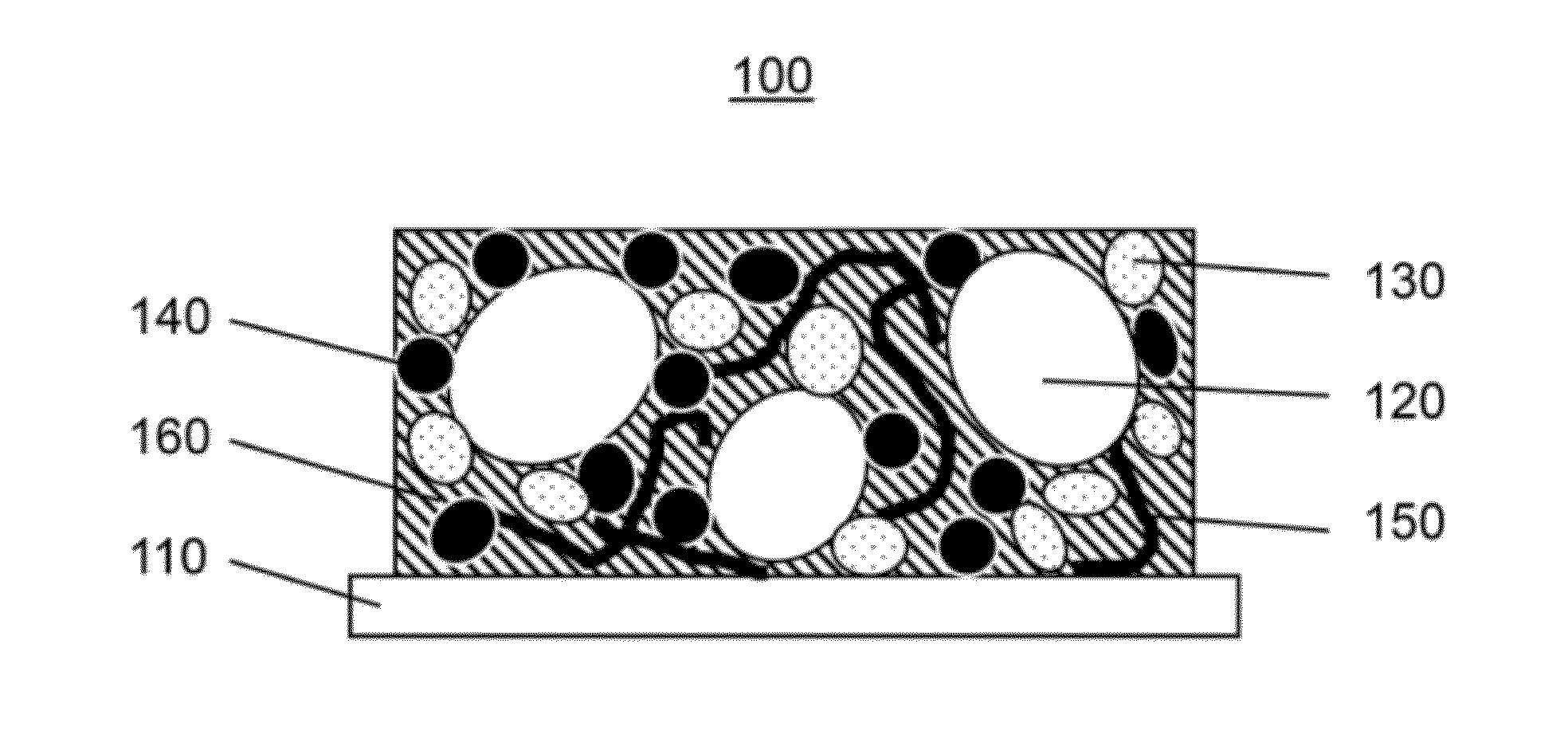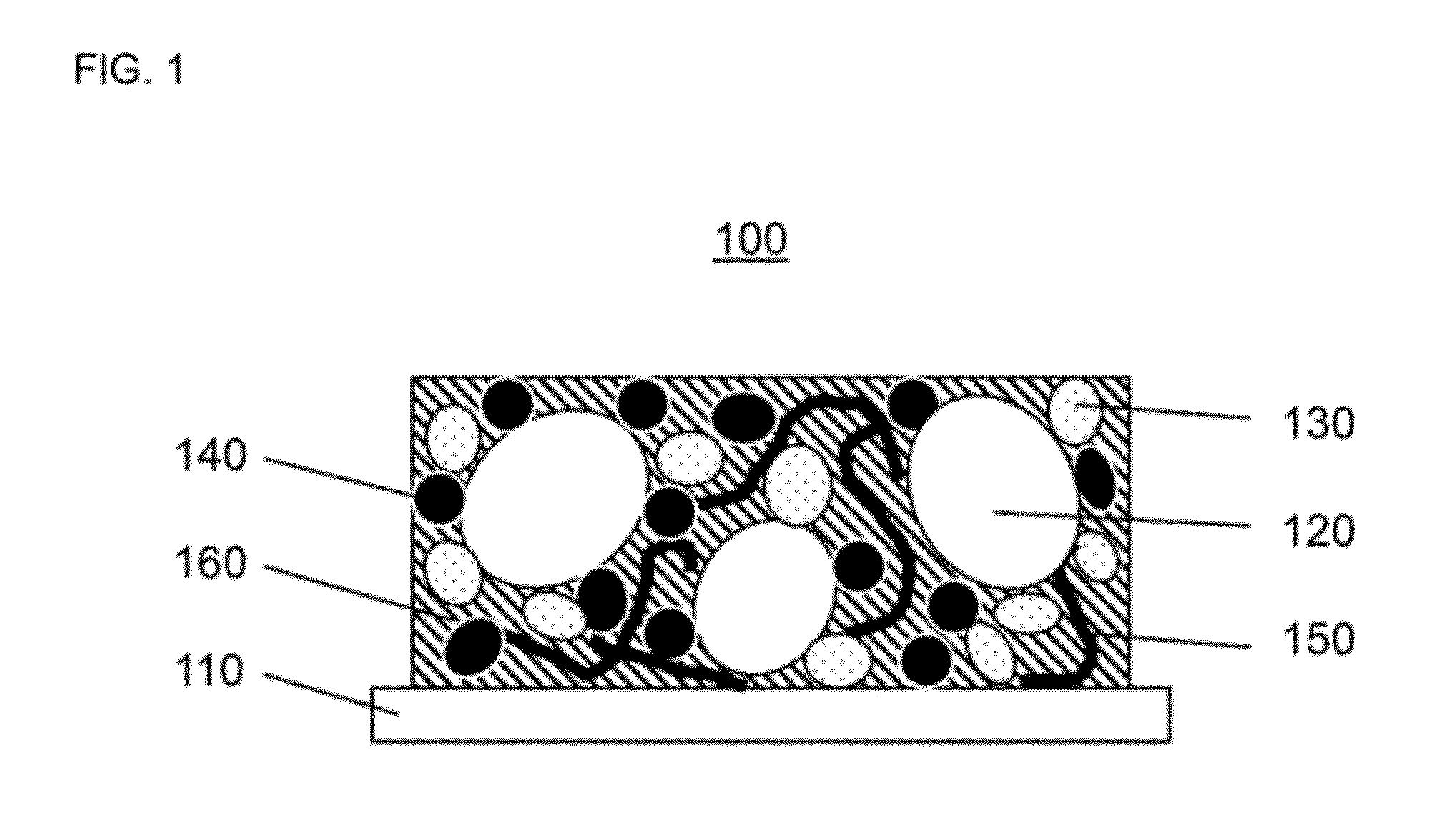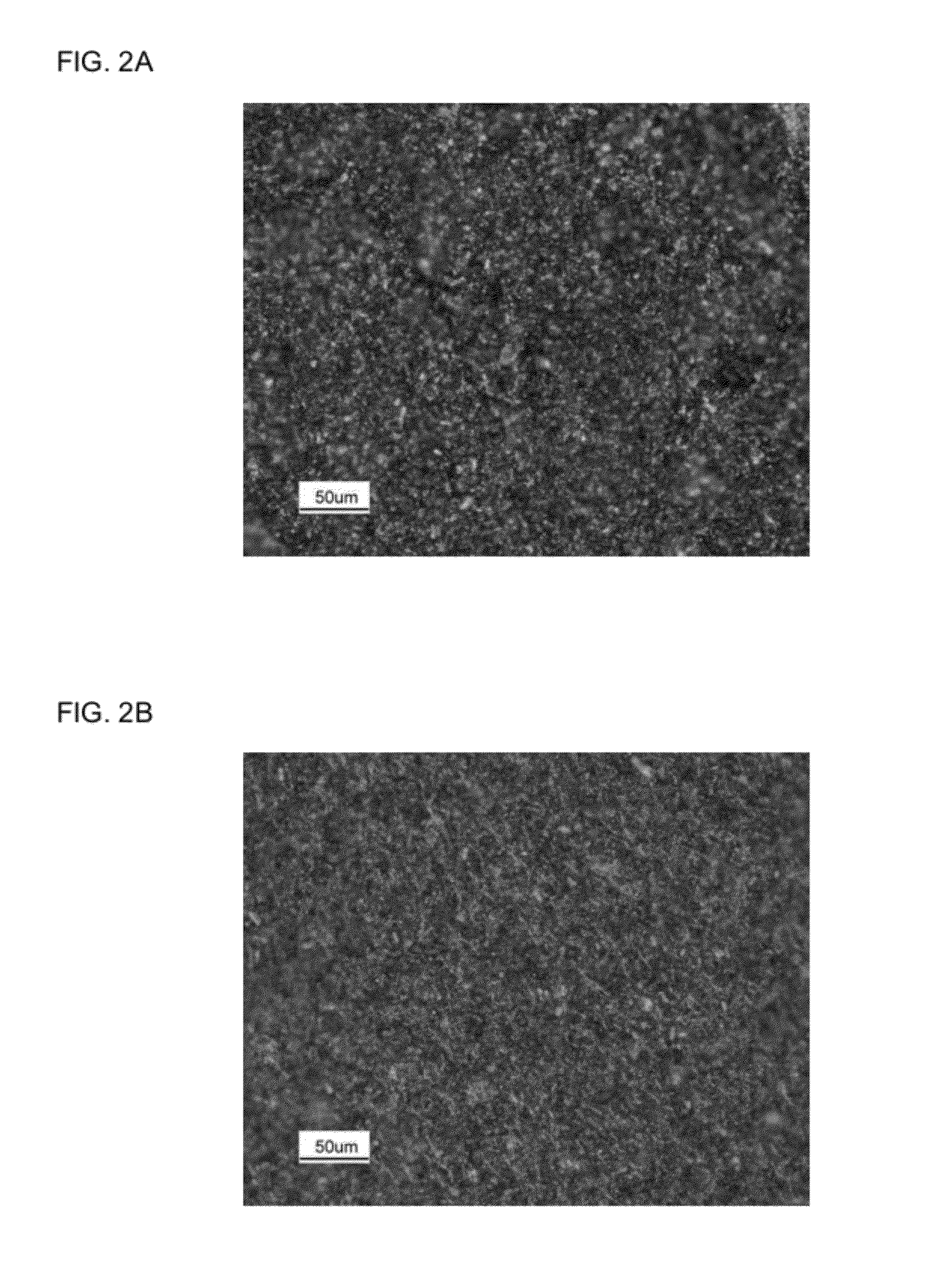Fluorinated carbon composite cathode for a high-energy lithium battery
a composite cathode and lithium battery technology, applied in the field of lithium/fluorinated carbon (li/cfx) batteries, can solve the problems of reducing the operating voltage of the battery, heat generation, and compromising the battery performance, and achieve the effect of reducing the initial voltage drop of the lithium/fluorinated carbon battery
- Summary
- Abstract
- Description
- Claims
- Application Information
AI Technical Summary
Benefits of technology
Problems solved by technology
Method used
Image
Examples
example 1
[0043]A cathode slurry formulation of 85% CFx, 10% SAB-50, and 5% PVDF by weight was prepared by using N-methylpyrrolidinone as the solvent. The total solid content of the slurry was about 25%. The obtained slurry was then coated onto an aluminum foil as the current collector using a doctor-blade having a gap of 10 milli-inch. After drying in an 80° C. oven, the resulting composite cathode sheet was punched into small discs with a diameter of 0.5 inch, followed by further drying at 105° C. under vacuum for 12 hours. The dried composite cathode discs were immediately transferred into a glove-box for assembly of the Li / CFx coil cells. The same procedure was used to coat another cathode having a composition of 85% CFx, 8% SAB-50, 2% carbon filament, and 5% PVDF.
[0044]FIGS. 2A-2B illustrate microscopic surface images of the above two composite cathodes 100. In particular, FIG. 2A is the surface image of the composite cathode having a cathode-formulation of 85% CFx, 10% SAB-50, and 5% PV...
example 2
[0045]In this example, two composite cathodes having the compositions: Cell-1: 80% CFx, 5% Fe2O3, 10% SAB-50, and 5% PVDF and Cell-2: 80% CFx, 5% Fe2O3, 9% SAB-50, 1% carbon filament, and 5% PVDF were prepared using the same method described in Example 1. Each cathode disc was weighed and then used to assemble a coin cell. The coin cell was assembled by using a 4 milli-inch thickness lithium foil as the anode, a Celgard 3500 membrane as the separator, and a solution of 0.5 m (mole per kilogram) LiBF4 dissolved in a 1:1 (by weight) mixture of 1,2-dimethoxyethane (DME) and propylene carbon (PC) as the electrolyte. In order to make a fair comparison, the cell was activated with a fixed amount of liquid electrolyte (i.e., 20 microliters) and stored at room temperature for 5 hours prior to the discharge test. Based on the weight and theoretical capacity of the CFx active material, a 0.2 C current rate was calculated and used to discharge the cell until the cell's voltage declined to 1.5 ...
example 3
[0046]In this example, two composite cathodes having the compositions: Cell-3: 85% CFx, 9% SAB-50, 1% carbon filament, and 5% PVDF and Cell-4: 80% CFx, 5% Fe2O3, 9% SAB-50, 1% carbon filament, and 5% PVDF were prepared using the same method described in Example 1. Using these two cathodes, two coin cells were assembled and tested as the procedure described in Example 2. Discharge voltages of Cell-3 and Cell-4 are compared in FIGS. 4A-4B (curves 3 and 4), whereby FIG. 4A illustrates a regular discharge (i.e., discharge at 0.2 C) and FIG. 4B illustrates a continued discharge at a reduced rate (0.02 C) after the cells were discharged at 0.2 C to 1.5 V and then recovered by resting for 5 hours. In particular, as shown in FIG. 4A, Cell-4, made of the CFx cathode containing 5% Fe2O3 has higher voltages over whole the entire discharge period, and thus has an overall longer discharge time. After being discharged to 1.5 V, the cells were rested for 5 hours to recover their open circuit volta...
PUM
 Login to View More
Login to View More Abstract
Description
Claims
Application Information
 Login to View More
Login to View More - R&D
- Intellectual Property
- Life Sciences
- Materials
- Tech Scout
- Unparalleled Data Quality
- Higher Quality Content
- 60% Fewer Hallucinations
Browse by: Latest US Patents, China's latest patents, Technical Efficacy Thesaurus, Application Domain, Technology Topic, Popular Technical Reports.
© 2025 PatSnap. All rights reserved.Legal|Privacy policy|Modern Slavery Act Transparency Statement|Sitemap|About US| Contact US: help@patsnap.com



